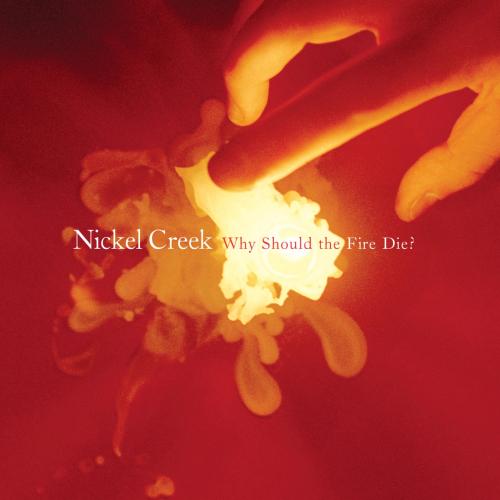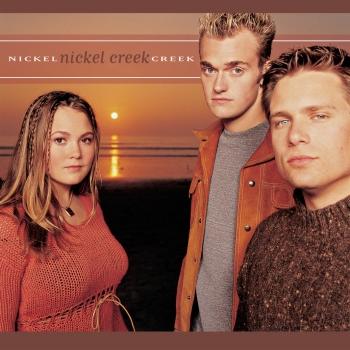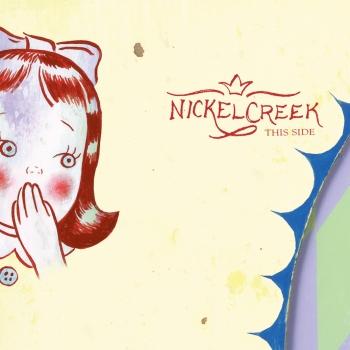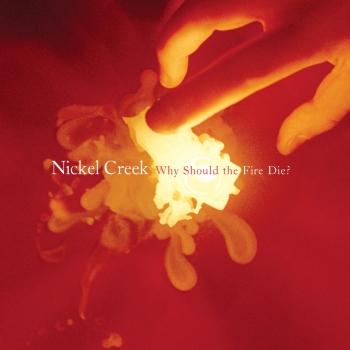
Why Should The Fire Die? (Remastered) Nickel Creek
Album Info
Album Veröffentlichung:
2005
HRA-Veröffentlichung:
02.10.2020
Das Album enthält Albumcover
Entschuldigen Sie bitte!
Sehr geehrter HIGHRESAUDIO Besucher,
leider kann das Album zurzeit aufgrund von Länder- und Lizenzbeschränkungen nicht gekauft werden oder uns liegt der offizielle Veröffentlichungstermin für Ihr Land noch nicht vor. Wir aktualisieren unsere Veröffentlichungstermine ein- bis zweimal die Woche. Bitte schauen Sie ab und zu mal wieder rein.
Wir empfehlen Ihnen das Album auf Ihre Merkliste zu setzen.
Wir bedanken uns für Ihr Verständnis und Ihre Geduld.
Ihr, HIGHRESAUDIO
- 1 When In Rome 04:16
- 2 Somebody More Like You 03:01
- 3 Jealous Of The Moon 04:42
- 4 Scotch & Chocolate 03:08
- 5 Can't Complain 05:35
- 6 Tomorrow Is A Long Time 03:36
- 7 Eveline 03:11
- 8 Stumptown 01:44
- 9 Anthony 01:56
- 10 Best Of Luck 03:23
- 11 Doubting Thomas 03:19
- 12 First And Last Waltz 01:54
- 13 Helena 04:46
- 14 Why Should The Fire Die? 02:51
Info zu Why Should The Fire Die? (Remastered)
As Nickel Creek integrated more rock and pop elements into their music, they went in a new direction with their 2005 album – enlisting producers Eric Valentine & Tony Berg. Why Should The Fire Die? features original material such as “When in Rome,” “Helena” and “Jealous Moon.” It also includes a cover of Bob Dylan’s “Tomorrow Is a Long Time.” The Billboard Top 20 album earned two GRAMMY nominations; Best Contemporary Folk Album and Best Country Instrumental Performance ("Scotch & Chocolate".)
Nickel Creek's third album, Why Should The Fire Die?. Working with producers Eric Valentine and Tony Berg, the platinum-selling band found innovative ways to capture their singular sound, resulting in a record that makes the listener sometimes wonder if there isn’t more than mandolin, guitar, violin and bass at play. Recorded on analog gear, each song is uniquely crafted – some sonically enhanced with vintage plate reverb, while others are recorded around a single stereo-microphone.
Valentine, unlike the band, did not grow up around traditional bluegrass instrumentation and helped Nickel Creek hear new roles for their instruments. He recognized the aggressive potential of their style, which until now, had not been captured on record. “Seeing the band live is a powerful experience. There are a moments where they are just explosive on-stage, and I wanted that in the record,” says Valentine. “I wanted moments on this record, moments where you think, how can three people and their instruments sound this big”
Indeed, Nickel Creek’s live performances have garnered legions of fans in wonder of their virtuosity, and the hybrid of genres that concoct a truly unique sound. Time named them “?Music Innovators for the New Millennium,”? and their 2002 release, This Side, captured the Grammy for “?Best Contemporary Folk Album.”?
The band spent the three years between albums not only touring, but exploring their craft via solo projects and collaborations. Violinist Sara Watkins’ work can be found on many projects including Ray LaMontagne’s Trouble, while sibling guitarist Sean Watkins has found new co-writing partners and side projects. Both can be frequently found sitting in with Jon Brion at his legendary Largo gigs. Thile most recently issued Deceiver, a more rock-influenced album on which he played over 26 instruments, before hitting the road with classical bassist Edgar Meyer. As a band they have performed with not only John Paul Jones of Led Zeppelin fame but also the Los Angeles Philharmonic.
The past three years brought a new depth to their playing, and also enriched their songwriting, epitomized by the Chris Thile/Gary Louris song “Jealous of The Moon.” Fans will recognize favorite Nickel Creek songs from live shows – including the blistering instrumental “Scotch and Chocolate,” the powerful “When In Rome,” and the faith questioning “Doubting Thomas.” Sara Watkins’ penned show-stealer, “Anthony,” evokes a 1920-era flavor, while the title track has threads of CSN&Y harmonies.
Ultimately, Nickel Creek hopes that these songs will live beyond the album”?recreated and reinterpreted when fans get together to play in their own jam sessions. “We would love for people to adopt these songs into their lives.”
Chris Thile, mandolin, vocals, mandola, bouzouki, banjo, tenor guitar, stomping
Sara Watkins, fiddle, vocals, ukulele, stomping
Sean Watkins, guitars, vocals, piano, bouzouki, stomping
Additional musicians:
Mark Schatz, bass, stomping
Eric Valentine, drums
Produced by Eric Valentine and Tony Berg
Digitally remastered
Nickel Creek
„Wenn ‚O Brother, Where Are Thou?’ die Tür zur Vergangenheit des Bluegrass für eine neue Generation geöffnet hat, sind NICKEL CREEK dazu entschlossen dem Genre eine Zukunft zu geben.“ (Entertainment Weekly)
Als Nickel Creek sich 2007 auf „Farewell (For Now)“-Tour machten, ließ der Titel ihrer Konzertreise schon erahnen, dass ihr Abschied nicht endgültig sein würde. Sechs Jahre später hat die aus Chris Thile (Mandoline/Gesang), Sara Watkins (Fidel/Gesang) und Sean Watkins (Gitarre/Gesang) bestehende Roots-Music-Band aus San Diego sich nun wiedervereinigt. Ihr neues und mittlerweile sechstes Album „A Dotted Line“ erscheint pünktlich zum 25-jährigen Bandjubiläum.
Gegründet haben Chris Thile, Sara Watkins und Sean Watkins die Band 1989, im zarten Alter von acht beziehungsweise elf Jahren. Schon während der Neunziger machten sie sich mit ihrer Mischung aus Americana, Bluegrass, Country und Folk einen Namen. Ihren Durchbruch erlebten sie im Jahr 2000, als Alison Krauss das selbstbetitelte, dritte Album der Band produzierte und Nickel Creek anschließend für zwei Grammys nominiert wurden. Der Nachfolger This Side brachte ihnen drei Jahre später sogar einen Grammy Award für das beste „Contemporary Folk Album“. Von Bluegrass-Wunderkindern entwickelte das Trio sich über die Jahre zur einer akustisch geprägten Band, die für ihre Breite an Einflüssen – sie reichen von Bach bis zu Radiohead – sowie ihren breiten Live-Sound bekannt ist. Nach ihrem fünften Album Why Should The Fire Die? (Nummer 17 in den U.S. Billboard Charts sowie Nummer 1 in den U.S. Billboard Top Bluegrass Charts) und einer Best-Of-Compilation verabschiedeten Nickel Creek sich 2007 schließlich in eine unbestimmte Schaffenspause. Nach all den Jahren im Scheinwerferlicht wollten die drei sich eine Pause gönnen, erwachsen werden.
Allerdings waren die einzelnen Bandmitglieder in jener Zeit keineswegs faul. Chris Thile nahm unter anderem drei Alben mit seiner Band Punch Brother auf, Sara Watkins veröffentlichte zwei Soloalben und kollaborierte mit The Decemberists und ihr Bruder Sean Watkins gründete mit Fiction Family und WPA gleich zwei erfolgreiche Bands. Doch das 25-jährige Bandjubiläum von Nickel Creek, so fanden die drei, könne man nicht einfach verstreichen lassen. Deswegen trafen sie sich im vergangenen Jahr im New Yorker Appartement von Chris Thile um ein paar Auftritte zu planen und einige Songs für eine EP zu schreiben.
Als Nickel Creek erst einmal angefangen hatten, funktionierte die Zusammenarbeit dann so gut, dass sie schnell ausreichend Material für ein ganzes Album hatten. Gemeinsam mit Produzent Eric Valentine (Queens Of The Stone Age, Smash Mouth), der schon das letzte Nickel Creek Album Why Should The Fire Die? produziert hatte, gingen sie ins Studio in Los Angeles. Neben eigenen Kompositionen, darunter die folkige erste Single „Destination“ und das Instrumentalstück „Elephant In The Corn“, enthält A Dotted Line nun außerdem zwei Coverversionen: „Where Is Lobe Now“ von Sean Phillips und Mother Mother’s „Hayloft“.
Keine zwei Wochen dauerten die Aufnahmen Am Ende. „Dieses Album fühlte sich um Längen natürlicher und einfacher an als alles, was wir zuvor gemacht haben“, sagt Sean Watkins rückblickend. „Die Tatsache, dass wir uns eine Zeit lang unseren eigenen musikalischen Persönlichkeiten gewidmet haben, hat uns geholfen zu reifen.“ Und Sara Watkins fährt fort: „Wir haben uns jeden Tag gefreut zusammen zu arbeiten. Es fügte sich einfach alles zusammen. Der Sound war warm und voll und ich finde unser Songwriting hat sich mit diesem Album deutlich verbessert.“
Wer genau hinhört, der stellt zwar schnell fest, dass es auf A Dotted Line eine Menge bittersüße Momente gibt – da sind zum Beispiel Trennungssongs wie „Christmas Eve“ oder das von Sara Watkins vorgetragene, schmerzhafte „Where Is Love Now“ – doch gleichzeitig verleihen die magischen Harmonien und die hörbare Spielfreude der Musik ein wohliges Gefühl. „Egal was wir tun, unsere Musik hat immer auch einen fröhlichen Aspekt“, so Chris Thile. „Die Dinge steuern ganz von alleine in diese Richtung. Wir stochern auch in dunklen Ecken herum, aber immer mit einer großen Portion Optimismus.“
Dieses Album enthält kein Booklet














